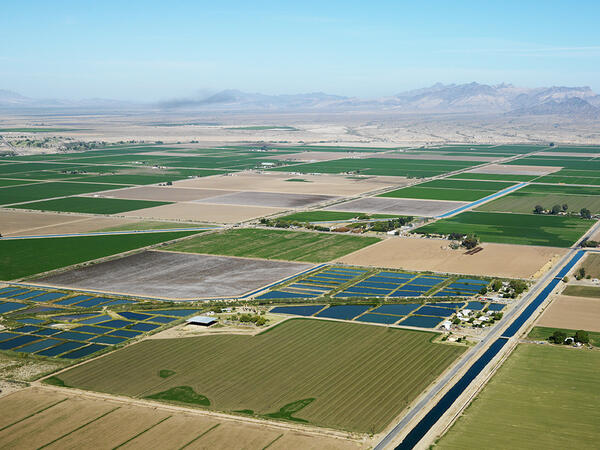The new EPA regulation provides a critical step in addressing PFAS contamination in drinking water. Reducing PFAS in drinking water offers a range of potential health benefits, both for individuals and the population as a whole, including lower cancer risk, improved immune function, reduced risk of birth complications, lower cholesterol levels and developmental advantages in children.
The new EPA regulation provides a critical step in addressing PFAS contamination in drinking water. Reducing PFAS in drinking water offers a range of potential health benefits, both for individuals and the population as a whole, including lower cancer risk, improved immune function, reduced risk of birth complications, lower cholesterol levels and developmental advantages in children.
While this rule only targets a specific set of PFAS compounds, it represents significant progress in protecting public health. The EPA estimates the new PFAS regulation will yield significant public health benefits over time, including the prevention of thousands of deaths and reduced instances of serious illness.
In short, yes. Readily available water filtration systems can remove most PFAS from home drinking water that has not already been municipally treated.
Carbon block filters, RO and some ion exchange resin systems that are certified to remove PFAS will carry a “NSF/ANSI 53” or “NSF/ANSI 58” label. RO systems are considered the most effective at removing a variety of contaminants, including PFAS. Some types of activated carbon filters, particularly those designed specifically for PFAS removal, can be effective.
It is critical that once in use, these systems also be maintained with new, regularly scheduled filter changes. The EPA offers more information on what to look for in home systems.
The effectiveness of different methods for removing PFAS at home can vary depending on the specific type of PFAS and the level of contamination in your water. No single home filtration method is guaranteed to completely eliminate PFAS.
If you're concerned about PFAS in your drinking water, it's also recommended that you have your water tested by a certified laboratory. This can help you determine the level of PFAS contamination and choose the most appropriate treatment option.
Regardless of the treatment method used, the process of PFAS removal generates a concentrated waste stream containing PFAS. Traditional wastewater treatment processes, like those focused on removing bacteria and organic matter, are largely ineffective at eliminating PFAS.
Several technologies show promise for PFAS removal in wastewater, but they are still under development. For example, similar to municipal water treatment, advanced GAC or ion exchange resins specifically designed for PFAS capture are being explored.
In addition, high-pressure membrane filtration systems like nanofiltration or RO can be effective, but they can be expensive and generate significant PFAS-laden solid or liquid brine wastes. High-temperature incineration can destroy PFAS compounds, but this method raises concerns about air pollution and significant energy inputs.
Treating PFAS in wastewater is an ongoing challenge that requires ongoing research and development of new technologies.
Tools

Surface Water in My Community Map
The Arizona Department of Environmental Quality's Surface Water in My Community map shares critical information on lakes and streams across the state, indicating factors such as impairment and permit limit excession…

Drinking Water in My Community Map
The Arizona Department of Environmental Quality's Drinking Water in my Community map focuses on public water systems throughout the state, indicating where contaminants such as nitrate have been detected and the…

PFAS Map
The Arizona Department of Environmental Quality's PFAS Map displays the results of testing conducted by ADEQ since 2023 at small public water systems across Arizona.

Waterway Map
This US Environmental Protection Agency tool allows users to enter their address and learn more about their community's waterway, such as swimming access, fishing safety, aquatic life, and drinking water.

Drinking Water Quality Report
US Environmental Protection Agency's Consumer Confidence Reports for each state, also known as an annual drinking water quality report from your water supplier.
Fact sheets

New federal PFAS rule
An explainer from the Arizona Water Innovation Initiative on the new federal regulation for PFAS in drinking water due to prevalence in surface or ground waters.
Research and policy briefs
Newsletters
Interested in keeping up with our events, news, and resources? Sign up for our newsletter today!
Sign up
Videos and webinars
In short, yes. Readily available water filtration systems can remove most PFAS from home drinking water that has not already been municipally treated.
Carbon block filters, RO and some ion exchange resin systems that are certified to remove PFAS will carry a “NSF/ANSI 53” or “NSF/ANSI 58” label. RO systems are considered the most effective at removing a variety of contaminants, including PFAS. Some types of activated carbon filters, particularly those designed specifically for PFAS removal, can be effective.
Regardless of the treatment method used, the process of PFAS removal generates a concentrated waste stream containing PFAS. Traditional wastewater treatment processes, like those focused on removing bacteria and organic matter, are largely ineffective at eliminating PFAS.
Several technologies show promise for PFAS removal in wastewater, but they are still under development. For example, similar to municipal water treatment, advanced GAC or ion exchange resins specifically designed for PFAS capture are being explored.
Municipal water providers are currently addressing PFAS contamination in their water supplies. There isn't a one-size-fits-all solution, but several treatment technologies can be effective, depending on the type and level of PFAS present.
The Arizona Department of Environmental Quality (ADEQ) has confirmed the presence of PFAS in public water systems across the state based on a screening program proactively developed in 2018. The agency is currently working to update their data in light of the new federal regulation, which will apply to approximately 950 water systems in the state.
PFAS are known for their unique properties that make them valuable in a variety of products. For example, PFAS repel water, oil and stains, making them ideal for coatings on nonstick cookware, rain gear and carpets. Their ability to withstand high temperatures is useful in fire-resistant materials, fire fighting foams at airports and electrical insulation. Although several types of PFAS have been phased out, many are still widely used.
Tap water is the water that is delivered to customers who are connected to the main supply of a local water system. Tap water is treated before delivery to meet the requirements of the Safe Drinking Water Act and is delivered within proper pressure parameters. Tap water is delivered to households, businesses, and industries and is used for many different purposes, including domestic uses indoors, domestic uses outdoors (such as landscape irrigation), and business and industrial purposes of all kinds, both indoor and outdoor.
An explainer from the Arizona Water Innovation Initiative on the new federal regulation for PFAS in drinking water due to prevalence in surface or ground waters.
The Arizona Department of Environmental Quality's Surface Water in My Community map shares critical information on lakes and streams across the state, indicating factors such as impairment and permit limit excession.
The Arizona Department of Environmental Quality's Drinking Water in my Community map focuses on public water systems throughout the state, indicating where contaminants such as nitrate have been detected and the status of improvement.